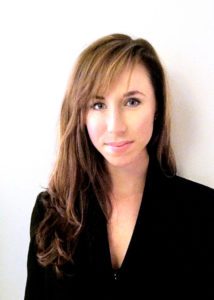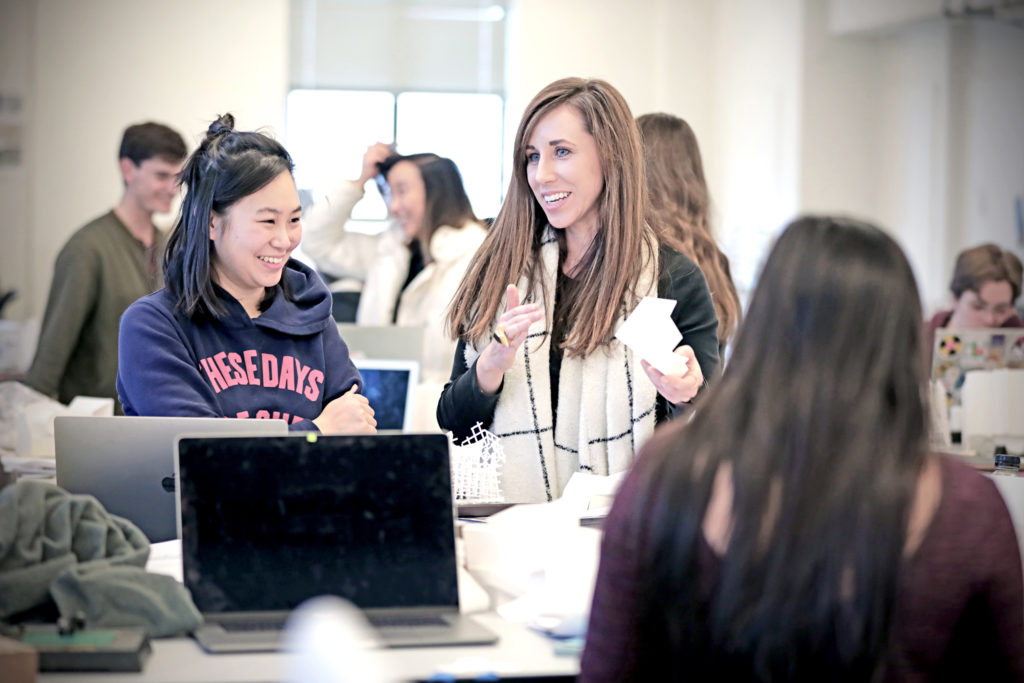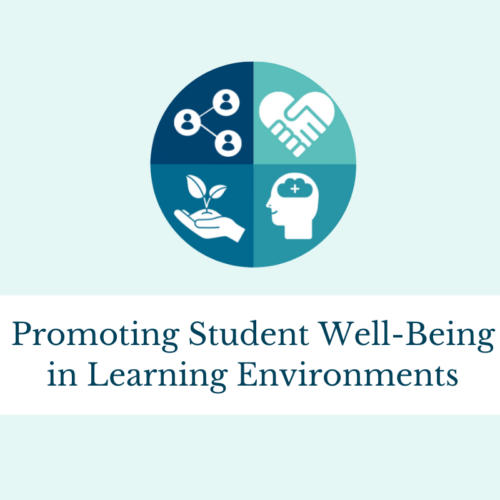Faculty Spotlight with Constance Vale, Assistant Professor of Architecture at Sam Fox School
 “I want to create a space for students to hone their perception; to listen, think, reflect, and take a position; to evaluate their view of the world and see that world anew. I try to cultivate students’ curiosity about architecture and broader social, political, and ecological issues and encourage them to use architecture to transform the world,” said Constance Vale, Assistant Professor of Architecture in the Sam Fox School at Washington University in St. Louis. Professor Vale teaches a variety of courses including an architecture studio, “The Autonomous Future of Mobility,” and a workshop, “Architecture Portfolio Design.”
“I want to create a space for students to hone their perception; to listen, think, reflect, and take a position; to evaluate their view of the world and see that world anew. I try to cultivate students’ curiosity about architecture and broader social, political, and ecological issues and encourage them to use architecture to transform the world,” said Constance Vale, Assistant Professor of Architecture in the Sam Fox School at Washington University in St. Louis. Professor Vale teaches a variety of courses including an architecture studio, “The Autonomous Future of Mobility,” and a workshop, “Architecture Portfolio Design.”
Professor Vale earned a BFA from Parsons School of Design and an MArch from Yale School of Architecture, where she received the Moulton Andrus Award for Excellence in Art and Architecture and two Feldman Nominations.
In 2020, Professor Vale was an honoree of the Emerson Excellence in Teaching Award, which recognizes educators for their leadership in and passion for teaching, their contributions to student learning, and their knowledge and creativity.
Professor Vale previously taught design studios and courses in history and theory at SCI-Arc and design studio in the summer programs at UCLA and Parsons. She has practiced architecture at nationally and internationally recognized offices in Los Angeles, New York City, and her hometown of Pittsburgh. Professor Vale’s work has been exhibited at the A+D Museum and published in the Journal of the American Institute of Architects, the Los Angeles Times, Archinect, and CLOG.
Professor Vale is also the director of The Factory of Smoke & Mirrors, an experimental research practice that carries out aesthetic and conceptual investigations in the area between architecture, art, and theatre.
In 2019, Professor Vale organized the event “Decoys & Depictions: Images of the Digital,” a symposium and set of three exhibitions. In 2015, she collaborated with Emmett Zeifman to complete a temporary pavilion in downtown Los Angeles for the experimental opera Hopscotch. Professor Vale is coauthoring the forthcoming Graham Foundation-supported book “Mute Icons,” with internationally-renowned architects Marcelo Spina and Georgina Huljich.
In an interview with The Center for Teaching and Learning, Professor Vale highlighted the importance of collaboration in architecture and the value of interdisciplinary studies in preparing oneself for the field.
What was your path toward becoming an architecture professor?
My path to becoming an architecture professor was by way of becoming an architect. In practice, you might work on one building for ten years. I am a licensed architect; I practice architecture—though in unconventional ways—and I have projects with long timelines. But, as a professor, you get to see hundreds or thousands of things come to life over ten years.
Architecture education is a collective act, maybe most of all, among the creative disciplines. Even if you’re working on your project, you’re never alone. You might feel alone, but then you should pull yourself out of it. You have to talk to somebody else about your project; this is something I continue to do to this day with my colleagues, but also with my students. So while they are asking me and each other questions, I’m asking them to think through a problem with me, typically one that I’m interrogating in my research. This energy of creating and thinking about things together is something that drew me to teaching.
I want the world to be full of amazing architecture. I want to prepare students to go out into the world with the strength to do architectural battle, to advocate for and make good buildings, public spaces, and things that are transformative to the world. Architecture has that power. It is a cultural endeavor. Returning to my original point, an architect might only build ten buildings in their life. So as a professor, one can have a greater impact on the built environment—when I practice, the lessons my teachers taught me are always on my mind. Through the scale and publicity of building, we share that magic with others and can really change the world through the work that we do.
Tell me more about The Factory of Smoke and Mirrors. How did you come up with this research practice, and what has been the response to these investigations?
Speculation is a word that is particularly important to The Factory of Smoke & Mirrors. We think about emerging technologies and media and invent futures, rather than simply accept them. We’re invested in architecture, but we also see theater, the visual arts, and engineering as disciplines to which architecture should look or with which we might engage. The name points at some of that same “magic” that I think about in my teaching. Think of movie magic; architects have different tricks than film-makers or theatrical artists, but the task is not so different. There’s something about a great building that evades easy description. I’ve spent much of my time teaching trying to articulate what I’m looking at and why it has the power it does so that I can share that information with students.
We think about that kind of stagecraft in our work. Our most recent and ongoing project is an extensive scenographic model—it’s 1:8 scale and is about 100’ x 100’. We’re doing this project in collaboration with Dr. Yevgeniy Vorobeychik in computer science at McKelvey School of Engineering here at WashU. He has a scale model autonomous vehicle that will drive through the model city we’re making. The model emulates streets, buildings, traffic signals, lights—we’re even planning to address atmosphere.
We’ve also built theatrical sets here in St. Louis. For instance, Insight Theatre’s production of “Silent Sky,” directed by Maggie Ryan. The scenic design involved projection on a three-dimensional screen. We created an animation that we then projected onto the three-dimensional screen to transform it from a night sky to an interior. Or in the past, when I was in Los Angeles at the Southern California Institute of Architecture, I designed a panorama with Emmett Zeifman for the Industry’s production of Hopscotch, directed by Yuval Sharon. That project involved 24 limos driving throughout Los Angeles with performances in the limos and distributed throughout the city. The panorama was a temporary installation with 24 screens streaming all the live performances. For the finale, the limos would drive through the panorama and all of the performers and the audience would unite.
How do students benefit from interdisciplinary studies?
Interdisciplinary studies give us the opportunity to learn from each other. It’s something that we continually benefit from in the Sam Fox School, which unites architecture, art, and design. Dean Carmon Colangelo, Director of Architecture Heather Woofter, and Director of Art Amy Hauft have established a collaborative atmosphere in the school that’s really incredible. This past year, I organized a symposium and curated a set of exhibitions, entitled Decoys & Depictions: Images of the Digital, supported by Ralph J. Nagel Dean’s Endowment, the Graduate School of Architecture & Urban Design, the College of Architecture. I was excited to be able to gather together so many amazing colleagues from across SFS; it was an incredible event, thanks to all of them.
I also teach classes that go a little beyond the discipline. This semester I’m teaching an architecture studio called “The Autonomous Future of Mobility,” in which the students are designing a transportation hub for autonomous vehicles and making animations to represent their projects. They have to confront architectural and urban issues, but we’re also talking to engineers about AVs. At the same time, we’re fortunate to have the Kemper Museum’s Teaching Gallery exhibit this semester to look at how the car and infrastructure are portrayed throughout the history of art. In another class, “Body as Site: Jewelry as Architecture,” the students are designing jewelry that takes on cyborg aesthetics. Cyborgs are a lens for us to approach women’s and transgender issues through feminist and queer theory (Solvi Goard & Donna Harraway) and provide a window into racial inequities in technology and design (Ruha Benjamin & Anne Anlin Cheng). We’re engaging with jewelry design experts like Professor Bruce Lindsey—who’s an architect but has an MFA in jewelry—and casting experts like Dryden Wells and Bryce Robinson, instructional technicians in the School of Art. My other workshop, “Architecture Portfolio Design,” welcomes incredible graphic designers like Luke Bulman and Becca Leffel Koren to share their expertise.
Architects need to have a pretty good range; our field is especially challenging for this reason, but you are never bored! We’re all lifetime learners. We get to learn something about other disciplines and bring that external intelligence back to architecture.

Photo by James Byard/WUSTL Photos
What are some of the challenges of teaching architecture, and how do you address them?
Students come into architecture with a general sense of what buildings are. The greatest challenge is teaching them to forget what they think architecture is so they can learn it anew. One of the professors that most influenced me, Peter Eisenman, taught a course in just that, informed by his teacher, Colin Rowe. Rowe asked him to look at a building and to draw what he could not see. I think about this same question as I teach my students. And what is it that “you can’t see” by just looking at a building? All kinds of things! Not the least of which include space, formal ordering systems, organizational systems, conceptual structures, embedded histories, political, social, and economic factors.
Architecture is extremely complex. It has to confront multiple concerns that cross between the discipline and practice. That is, both the visible—the material and technical concerns of architecture—and the invisible. In architecture, these two overlap with and thread through one another, but to deal with them requires one to address a whole host of challenges.
I’ve had the pleasure of teaching a lot of introductory core classes. One of the things I most often repeat to students in this introductory coursework is that “architects don’t make buildings, they make drawings or images of buildings.” That comes from one of my favorite teachers, one that I never studied with and who was since lost to this world: Robin Evans. During his lifetime, Evans taught the Architectural Association in London. He has profoundly impacted my teaching through his brilliant essays, which are in-depth analyses of architectural representation and the translations between drawing and building. To realize the invisible, you have to be able to imagine it through images. Representation—drawings, models, renderings, animations—has a tremendous impact on how we think, what we build, and what futures we create as architects.
How have you adapted your teaching during the pandemic? What advice do you have for other instructors teaching during this challenging time?
Oh, that’s a difficult question; we’re all experimenting! I’ve learned a lot from speaking to and sharing ideas with my colleagues. Some experiments are successful, and others send us back to the drawing board. There is one thing in which I do feel confident. I have tried to introduce a spirit of fun in my courses. There aren’t many opportunities for fun amid the serious situation we’re all facing, but meeting for class is one of those opportunities. We have class playlists that are thematically tuned to the course topic. We have an atmospheric classroom in Figma with images, color, and texts that describe the course, and the work the students are producing is up on the board. So you can see their work develop in real-time and across the entire semester. In a way, we can see more of what they’re producing than we’ve ever been able to before. Usually, things get pinned up for a day, and then get shuffled into a drawer—if you’re lucky, maybe you see them again at the final review. And so this picture of the entire class unfolding through the semester has been really amazing to see.
The other thing that I focus on, pandemic or not, is positive reinforcement. I look for what is going well and water it, so it grows; if you give that aspect of the project enough water, it will eventually overshadow the weeds. I rarely work with a student who isn’t giving it their all. Maybe that’s the good fortune of being at WashU and working with the talented and dedicated students that are drawn here. Letting students know that you want to help them grow and produce really exciting work goes a long way to helping them achieve success. Failures along the way are okay and even necessary; they’re evidence of learning. And I let the students know that I’m not infallible either. If they have a problem, they can come talk to me. I’m always open to feedback; I want to listen, adapt, and learn.
Who are some of the teachers who have most inspired you, and why?
For one, all of my colleagues in architecture inspire me. They’re an incredibly collegial group that are fantastic educators, thinkers, and makers. We’re all interested in knowing what each other is doing and supporting one another. So I find inspiration in teaching with and around my colleagues all the time. Director Heather Woofter is somebody who I admire incredibly and consider a role model. Her grace in her leadership is awe-striking. She’s so dedicated to the school and each of the students and faculty. And some of my greatest teachers—like Robin Evans and countless others—have never formally been my teacher or we’ve never met. I’ve learned a wealth of information from them through the discipline, through engagement with the buildings they’ve built, drawings that they’ve drawn, and texts that they’ve written.
But focusing on those that I studied with as a student at Yale, Marcelo Spina and Georgina Huljich—with whom I’ve written a book, soon to be published, Mute Icons—and Other Dichotomies of the Real in Architecture—had a profound impact on my education and career. I think about the lessons that I learned in their studio all the time; they inform how I work and how I operate as a designer. When I was their student, I mentioned to them that I wanted to teach. And Marcelo said, “you should come to LA and teach at SCI-Arc,” and Georgina welcomed me to teach to UCLA in the summer studio. It was an amazing thing to go and teach at such incredible schools straight out of graduate school.
Greg Lynn is another teacher who inspired my curiosity in things I’m still thinking a lot about now. As I mentioned, I’m working with students on animations of transit hubs in one class and jewelry designs in another. Greg understands architecture as a discipline but an expansive one. He prompted us to design a major infrastructural project, a dam in Tennessee. Buildings are typically static, but in this case, we had these giant moving elements—gantries, locks, and the like. He encouraged me to do an animation for my final project—this was incredible to me, it just never occurred to me that you could make an animation as the primary representation for your project. Having professors who are doing things that break from the status quo is crucial to widening your view as a student.
What do you hope students take away from your classes?
Curiosity. I encourage students to be curious about their individual project, the studio, architecture at large, and the world. Good architects have to be both versed in the specifics of our discipline but also generalists that seek to know a wide range of information. I’m not just sharing skills or knowledge; I want to create a space for students to hone their perception; to listen, think, reflect, and take a position; to evaluate their view of the world and see that world anew. I try to cultivate students’ curiosity about architecture and broader social, political, and ecological issues and encourage them to use architecture to transform the world.
Something that I think about a lot in my teaching is narrative or fiction. I often ask students to write a story about their project. Narrative is a really important vehicle; reading fiction increases empathy. Even into adulthood, if you read fiction, you can become more empathetic. This is something that I see as profoundly tied to creativity. Fiction allows you to think into other worlds and see through other eyes. You can’t read a novel without having to sort of rebuild the world the author is offering to you. We really work in this space as architects; we build worlds. We allude to the wider globe’s possibilities within a fragment, whether it’s a building, a city, a piece of jewelry. Whatever you might be designing holds in it a kernel of an alternate universe.
Geometry, form, space, and aesthetics are our domain as architects. These modulate program, site, society, atmosphere, and experience—those forces that are largely outside our control. We can’t directly change policy or politics, but we can inspire social change through operating as experts in our field. An incredible educator that I worked with in the past, Todd Gannon, shared this Dave Hickey quote with me and I return to it a lot, “The task of beauty is to enfranchise an audience and to acknowledge its power—to designate a territory of shared values between the image and its beholder and then, in this territory, to advance arguments by valorizing the picture’s problematic content.” By changing aesthetic paradigms, we can change the way that people see the world. All architects are teachers, and the best ones teach the world to be better.
What advice do you have for aspiring instructors?
I’ll offer my advice for aspiring instructors and aspiring architects because it’s actually the same: speak your dreams aloud. If you don’t say them, you sometimes lose track of what they are or never really know. In either of those cases, you could end up aimlessly going for a grade or the next accomplishment without having a good grasp of why you’re doing what you’re doing. It’s essential to keep track of what it is that you want so that you can prioritize and aim for it. You’ve chosen this field of study because you like to create and imagine; you don’t want to end up losing that thread. One of your most important design projects is your career. Tell other people what you want to do in the future, as specifically as you can, because it will help you direct your trajectory—the courses you pick, the internships you take, and the schools you attend.
Another significant outcome of focusing your intentions in architecture is that it will help you to define your “Project,” thesis, your life’s work—whatever you want to call it. You fill in the picture, little by little. Speak it, write it, and—most importantly, in this case—make it through your creative projects. All of that will help you to paint that picture for yourself. As architects, sometimes we’re more articulate in images or physical production than through words. Making the thing that you want to make can sometimes help you when words fail. And rely on creative processes to help you discern what you truly love to do.
The other reason to speak your career intentions has an even more direct outcome. As I mentioned, my trajectory toward becoming a professor involved me telling one of my professors. I can’t overstate this: speaking your goals will make it possible for others to help you achieve them. Architecture is a mentorship field, and others will be happy to step in and support you.



